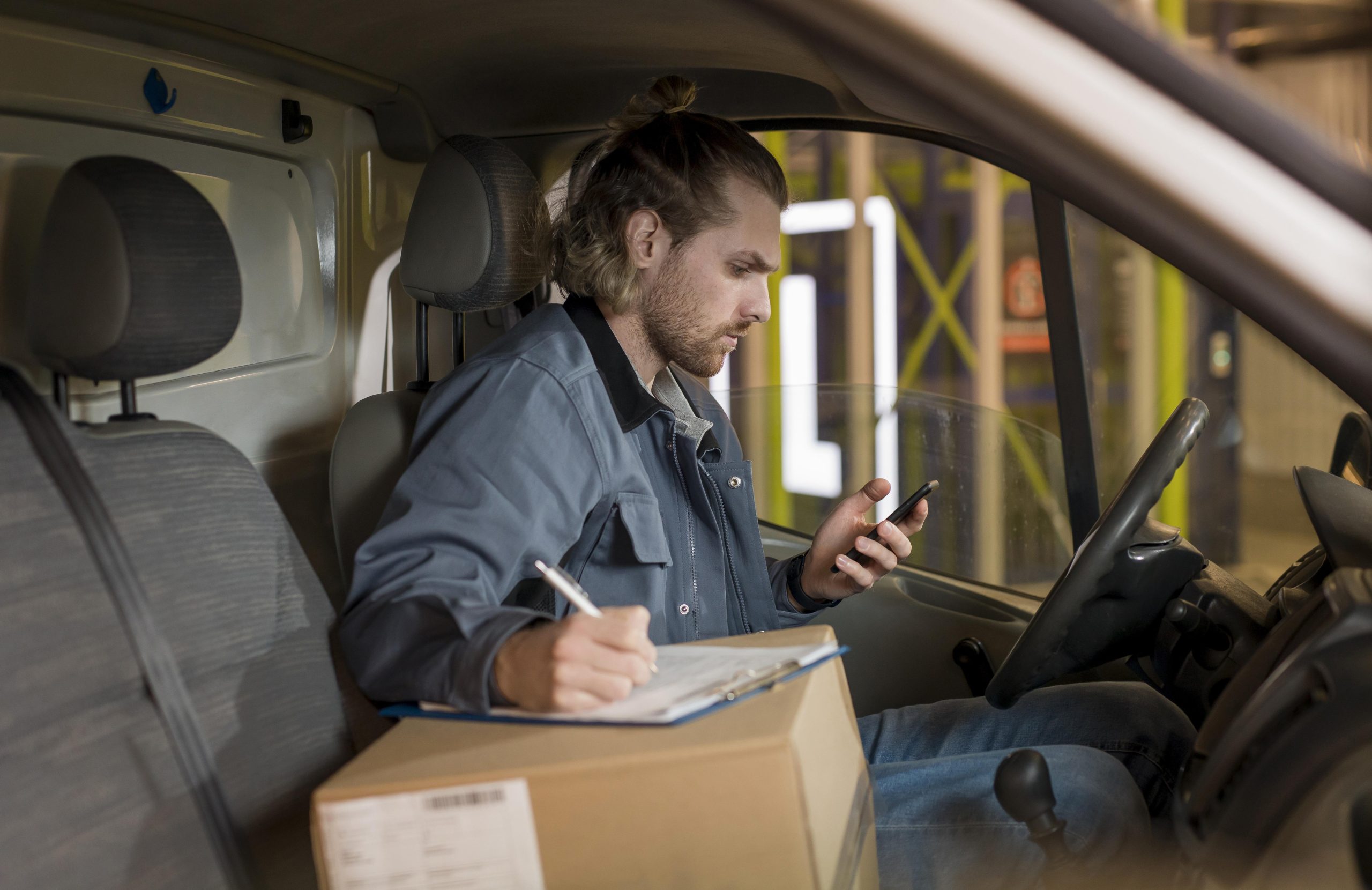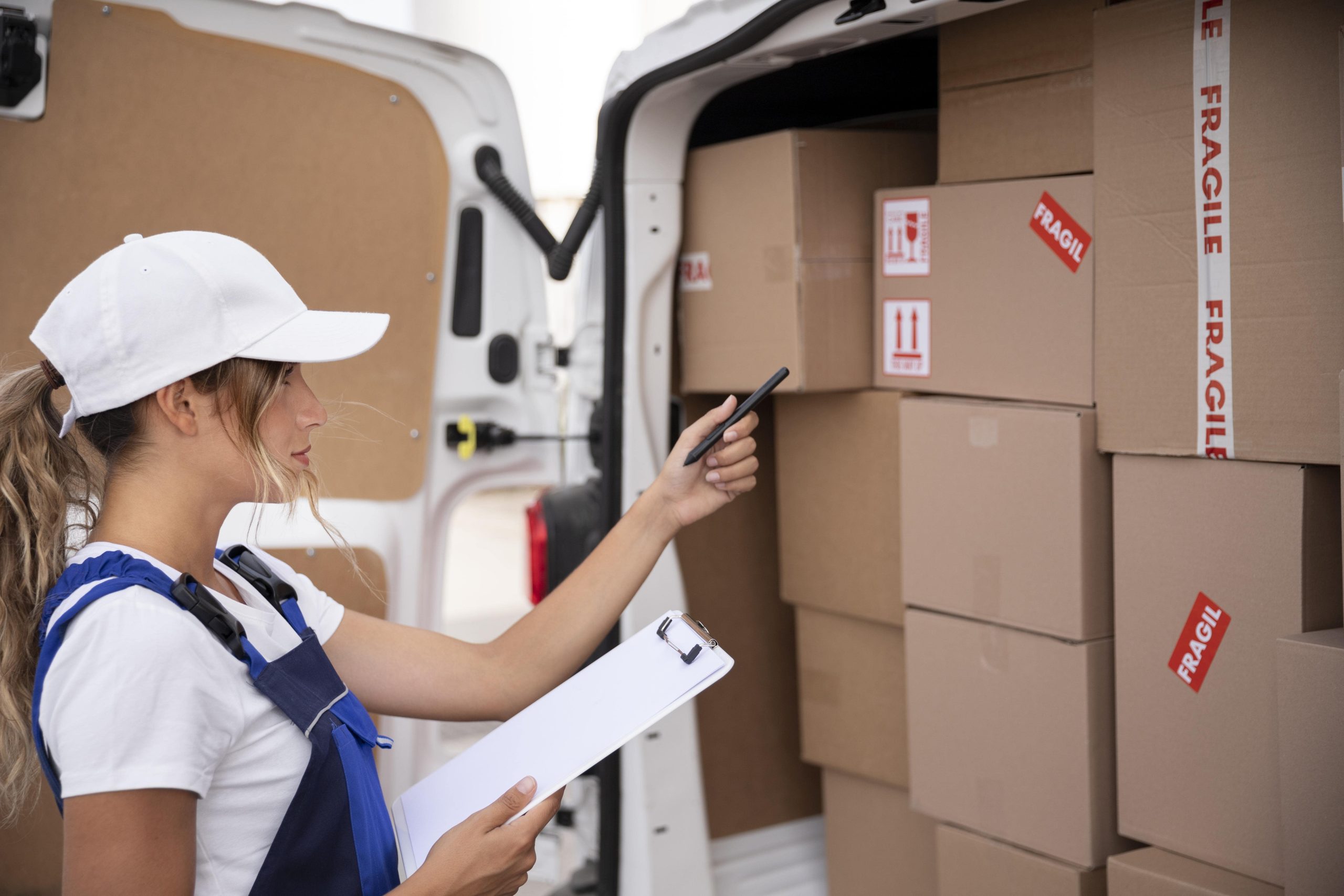Whether you’re hiring a van for a house move, transporting goods, or managing a short-term job, it’s vital to perform a full van safety check before hitting the road. Even if the rental is only for a few hours, a few simple checks can make the difference between a safe, hassle-free journey and a potentially dangerous or costly experience.
Van safety checks aren’t just about ticking boxes—they’re about protecting you, your cargo, and other road users. This guide will walk you through the most important checks to carry out, from conducting a rental vehicle inspection to checking your tyre pressure and securing your load.
Why Van Safety Checks Matter
Before you get behind the wheel of any vehicle—especially a rental—it’s essential to ensure everything is in good working order. Unlike your own vehicle, you don’t have the benefit of knowing how well it’s been maintained or how it feels to drive. Van safety checks give you that peace of mind and help prevent breakdowns or accidents.
Rental vans are used frequently and by a wide variety of drivers. While most hire companies maintain their vehicles well, issues can still arise. Missed damage, underinflated tyres, faulty lights, or unsecured loads can lead to serious consequences, from fines and failed deliveries to accidents or injury.
Thorough checks also protect you financially. Noting pre-existing damage as part of your rental vehicle inspection ensures you won’t be wrongly held responsible when the van is returned.
Step-by-Step Rental Vehicle Inspection
Before you drive away, perform a detailed rental vehicle inspection. Start with a full walk-around of the van, taking your time and using your phone to take clear photos or videos of any dents, scratches, or damage to the bodywork, bumpers, lights, or mirrors.
Check all exterior panels, especially the front and rear corners where most minor scrapes occur. Examine the windscreen and side windows for chips or cracks, which could impair visibility or worsen over time.
Next, inspect the lights:
- Test indicators, brake lights, reverse lights, headlights, and hazard lights.
- Ask someone to confirm they’re working while you activate them.
- Any issues should be reported to the rental company immediately.
Lift the bonnet and review fluid levels:
- Engine oil should be between the min and max marks.
- Coolant and brake fluid should be topped up.
- Washer fluid is often overlooked but critical for visibility.
Look beneath the van for signs of leaking fluids. If you see any drips or puddles, notify the rental company straight away.
Tyre Pressure and Tread: Often Overlooked but Vital
Checking tyre pressure is one of the most important van safety checks you can perform. Incorrect tyre pressure affects vehicle handling, increases stopping distance, and reduces fuel efficiency. In a heavily loaded van, this can lead to dangerous blowouts or poor road grip.
Use a tyre pressure gauge or visit a garage with an air pump. The correct PSI (pounds per square inch) is usually printed on a sticker inside the driver’s door frame or listed in the van’s manual. Don’t forget to check all four tyres—and the spare, if supplied.
Inspect the tyre tread depth using a 20p coin or tread depth gauge. UK law requires at least 1.6mm across the central three-quarters of the tyre. Also check for signs of:
- Cracking
- Bulging
- Embedded stones or nails
Uneven wear could indicate alignment or suspension issues and should be flagged before driving.
Ensuring a Secure Load
When transporting goods, furniture, or equipment, securing the load is absolutely essential. Unsecured items in the back of a van can shift during transit, especially when turning or braking. This can throw off the van’s balance, damage cargo, or cause injury.
Use ratchet straps, bungee cords, or cargo nets to hold items in place. Secure heavy items at the bottom and towards the front. Spread weight evenly across the floor to prevent the van leaning to one side.
Make full use of anchor points built into the van’s interior. If your rental van has a bulkhead or partition between the cabin and the cargo area, it will help prevent items from sliding forward. If there’s no partition, additional care must be taken.
Check your load regularly on long journeys. Straps can loosen, and items may shift, so pull over safely and double-check everything remains secure.
Adjusting Mirrors and the Driving Position
Vans are larger and handle differently from cars, so it’s important to adjust your seating and mirrors before setting off.
Adjust your seat so you can:
- Reach pedals without stretching
- See the instrument panel clearly
- Maintain a relaxed posture for long drives
Next, adjust side mirrors. Most vans don’t have a rear-view mirror due to solid rear doors, so side visibility is crucial. Use the top section of the mirrors to see traffic, and the convex section (if available) to minimise blind spots.
If your rental van includes a rear camera, familiarise yourself with it. Test how it functions when reversing so you’re not caught off guard later.
Double-Checking Lights and Visibility
If you’re planning to drive at night, in fog, or in poor weather, visibility is key. Check:
- All external lights again before departure
- That your windscreen is clean, both inside and out
- That wipers are functional and not worn or split
Some vans have manual headlight adjustment to avoid dazzling others when fully loaded. Adjust as needed and carry spare bulbs if possible.
Reviewing Documentation and Fuel Details
Before leaving the rental location, ensure you have:
- The van’s V5 registration document
- Proof of insurance cover
- The rental agreement
- Emergency contact numbers for the hire company
- A clear understanding of the fuel type and return policy
Many rental companies request the van be returned with a full tank. Filling it with the wrong fuel can cause expensive damage, which you may be liable for.
Test Driving: Brakes, Clutch, Steering
Before joining traffic, take a few moments to test the van in a safe area like a car park:
- Press the brake pedal—it should feel firm and responsive
- Test the clutch and gears—gear changes should be smooth
- Steer left and right—there should be no stiffness or knocking sounds
If anything feels off, stop and contact the rental company. Do not continue driving a vehicle that appears faulty.
Safety Features and Warning Lights
Many vans are fitted with safety features like ABS, lane assist, or cruise control. These can be helpful, but make sure you understand how to use them. The vehicle’s manual—usually stored in the glovebox—will explain their functions.
When starting the van, pay attention to the dashboard. Warning lights that remain lit could signal serious issues. Never ignore:
- Engine warning light
- Brake system light
- Tyre pressure warning
- Airbag warning
If you’re unsure about any warning symbol, check the manual or ask the rental provider before leaving.
Plan Your Route with Height and Weight Limits in Mind
Some roads are unsuitable for vans due to height restrictions, narrow lanes, or weight limits. Use a navigation app that allows you to input your vehicle type or dimensions. Be particularly mindful of:
- Low bridges
- Urban weight restrictions
- Narrow village lanes
Plan ahead and allow for extra time—vans are slower than cars, especially when loaded. Driving cautiously and leaving greater stopping distances will keep you and your cargo safe.
Speed Limits and Road Awareness
In the UK, vans typically have different speed limits than cars:
- 50mph on single carriageways
- 60mph on dual carriageways
- 70mph on motorways (unless otherwise signed)
Check with the rental company, as some larger vans may have additional restrictions. Always adapt your speed in wet, icy, or windy weather. High-sided vehicles are more prone to crosswinds, so grip the wheel firmly and drive cautiously.
Staying Alert and Taking Breaks
Driving a van can be physically and mentally tiring, especially if you’re not used to larger vehicles. To stay sharp:
- Take a 15-minute break every 2 hours
- Stay hydrated and avoid heavy meals
- If you feel drowsy, pull over safely and rest
Some vans may have built-in fatigue warnings, but it’s best to listen to your body and plan breaks into your schedule.




